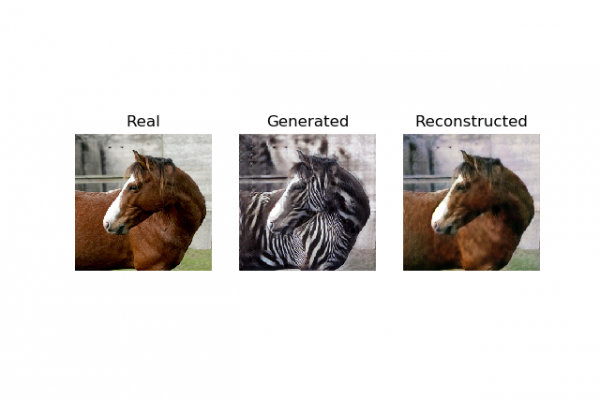How to Develop a CycleGAN for Image-to-Image Translation with Keras

Last Updated on September 1, 2020
The Cycle Generative Adversarial Network, or CycleGAN, is an approach to training a deep convolutional neural network for image-to-image translation tasks.
Unlike other GAN models for image translation, the CycleGAN does not require a dataset of paired images. For example, if we are interested in translating photographs of oranges to apples, we do not require a training dataset of oranges that have been manually converted to apples. This allows the development of a translation model on problems where training datasets may not exist, such as translating paintings to photographs.
In this tutorial, you will discover how to develop a CycleGAN model to translate photos of horses to zebras, and back again.
After completing this tutorial, you will know:
- How to load and prepare the horses to zebras image translation dataset for modeling.
- How to train a pair of CycleGAN generator models for translating horses to zebras and zebras to horses.
- How to load saved CycleGAN models and use them to translate photographs.
Kick-start your project with my new book Generative Adversarial Networks with Python, including step-by-step tutorials and the Python source code files for all examples.
Let’s get started.